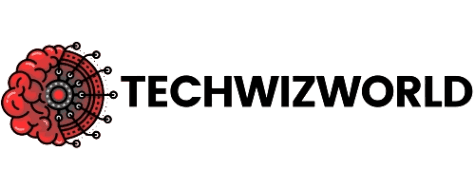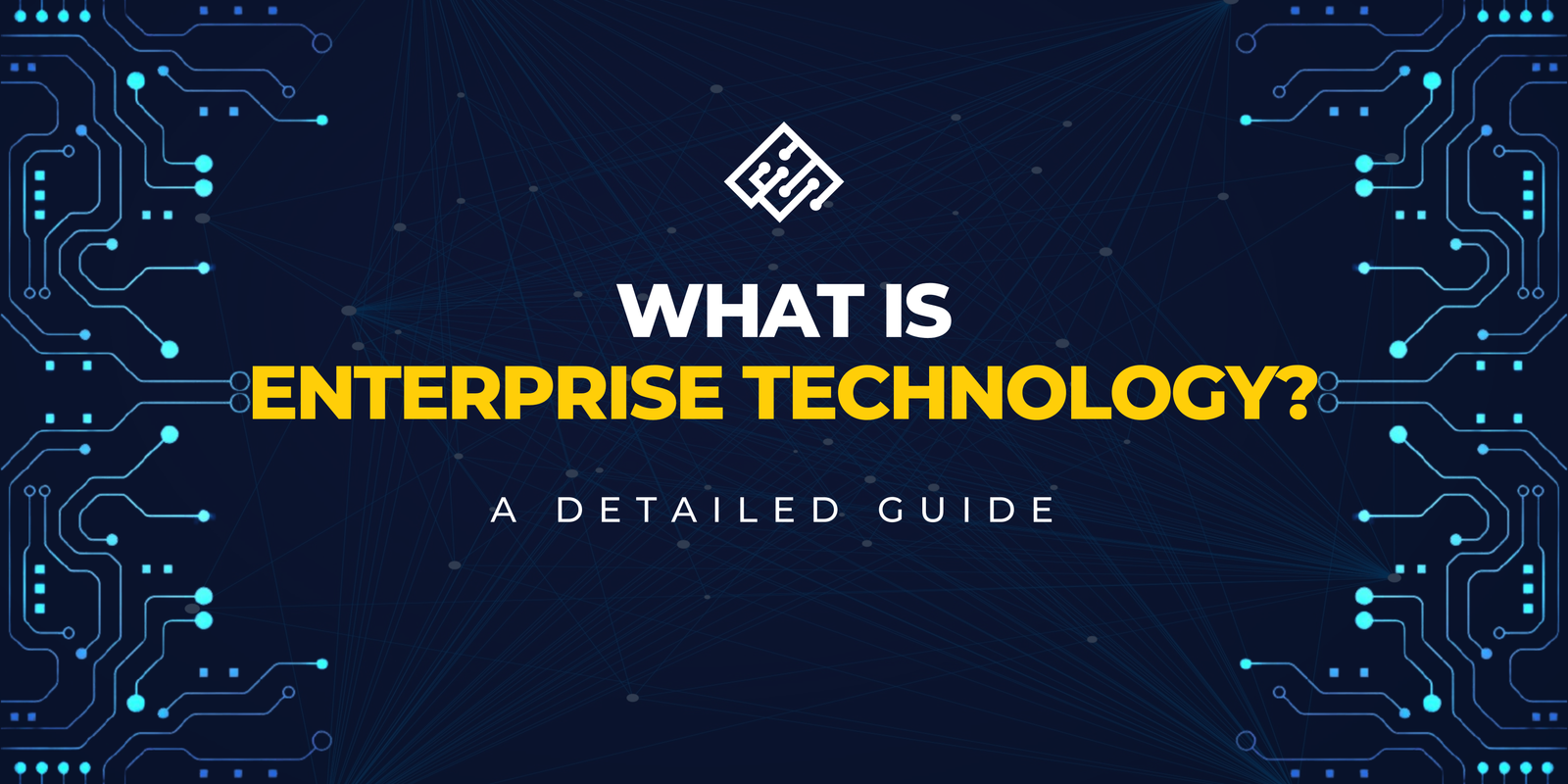What Is Enterprise Technology? – Know Everything With Examples
Organizations rely heavily on enterprise technology to operate and compete in the modern business landscape. This technology consists of various tools and systems designed to support large-scale business operations. The impact and applications of technology become increasingly important as businesses evolve.
In this article, you will explore the various aspects of enterprise technologies, providing examples to illustrate its practical uses. We aim to give you knowledge about how these technologies drive efficiency, innovation, and growth within organizations. Let’s know first what enterprise technology is.
What Is Enterprise Technology?
Enterprise technology is related to the software, hardware, and systems that large organizations use to manage their day-to-day operations, analyze data, and foster collaboration. It is like the digital backbone that keeps businesses running smoothly and efficiently. These tools empower organizations to:
Streamline processes:
Automate repetitive tasks, manage complex workflows, and optimize overall efficiency.
Gain data-driven insights:
Analyze vast amounts of information to make informed decisions, understand customer behavior, and identify growth opportunities.
Enhance communication and collaboration:
Facilitate seamless communication across departments and locations, fostering teamwork and knowledge sharing.
Boost productivity:
Free up valuable human resources from mundane tasks for strategic thinking and innovation.
Enterprise Technology Examples
Here are some examples:
Enterprise Resource Planning (ERP) Systems:
These are the workhorses of enterprise technologies. This integrates various departments like accounting, human resources, and manufacturing into a single system.
Customer Relationship Management (CRM) Systems:
CRM systems focus on managing all aspects of a company’s customer interactions. They help businesses track customer data, personalize marketing campaigns, and provide exceptional customer service. Think of it as a centralized platform for nurturing leads, managing sales pipelines, and building stronger customer relationships.
Supply Chain Management (SCM) Systems:
These systems oversee the entire flow of goods and services within a supply chain. They track inventory levels, optimize logistics, and ensure timely delivery of products. Imagine a complex web that manages everything from raw materials to finished goods, ensuring efficient procurement, production, and distribution.
Business Intelligence (BI) Tools:
BI tools provide businesses with insights from their data. They collect, analyze, and visualize data from various sources, empowering companies to make data-driven decisions, identify trends, and measure performance.
Enterprise Communication and Collaboration Platforms:
These platforms facilitate seamless communication and collaboration across teams and departments. They offer features like instant messaging, video conferencing, and document sharing, fostering teamwork and knowledge sharing regardless of physical location.
Types Of Enterprise IT Services
The core of digital age transformation lies in enterprise IT services, a vast ecosystem of solutions that ensure smooth functioning, optimal efficiency, and a competitive edge for organizations. Here are the different types:
Business Process Services (BPS):
This category focuses on optimizing and automating core business processes. BPS providers can help with:
Workflow automation:
Streamline repetitive tasks and eliminate manual errors.
Document management:
Implement systems for efficient document creation, storage, and retrieval.
Business process outsourcing (BPO):
Delegate non-critical tasks to specialized service providers.
Application Services:
This area deals with managing and maintaining the software applications that power enterprise technology operations. Application services can include:
Application development:
Develop custom applications or deploy pre-built solutions tailored to specific needs.
Application integration:
Integrate various enterprise software applications to ensure seamless data flow and eliminate silos.
Application management and support:
Maintain applications, troubleshoot issues, and provide ongoing technical support.
Infrastructure Services:
This category forms the foundation for all IT operations. Infrastructure services typically involve:
Cloud computing:
Utilize cloud-based solutions for data storage, application hosting, and server management.
Network management:
Design, implement, and maintain secure and reliable computer networks.
Data center services:
Manage and maintain physical data centers or leverage colocation facilities.
Security Services:
In today’s digital landscape, cybersecurity is paramount. Security services encompass:
Vulnerability management:
Identify and address security vulnerabilities within systems and networks.
Data security:
Implement solutions to protect sensitive data from unauthorized access or breaches.
Disaster recovery:
Develop plans and procedures to ensure data and system recovery in case of disasters.
Benefits Of An Enterprising IT Approach
- An enterprising IT approach allows businesses to adapt to changing regulations, embrace new technologies like cloud computing, and capitalize on emerging market opportunities quickly.
- Information technology enterprises promotes leveraging data to make informed choices. By collecting and analyzing vast datasets businesses can gain insights into customer behavior , market trends and operational performance.
- Enterprising IT fosters a culture of exploration and implementation of cutting-edge technologies. This can lead to the development of new products and services, improved customer experiences and a significant competitive edge.
- Modern IT solutions, championed by an enterprising approach, enable seamless collaboration and communication across teams and departments, regardless of location. This fosters knowledge sharing, breaks down silos and facilitates a more collaborative work environment.
- Businesses can leverage IT as a powerful tool for growth and achieve a significant competitive edge in the US market by embracing agility, data-driven decision making, and a culture of innovation.
Criteria For Selecting The Right Enterprise Technology Solution
Following is the criteria for selecting the right enterprise technologies:
Understanding Your Needs:
Business Goals:
Analyze your pain points, growth aspirations, and industry trends within the US market to ensure the enterprise technology strategy remains relevant.
Target Users:
US business blogs highlight user adoption. Consider who will use the technology and their technical expertise. Choose a solution that caters to their skill level and workflows.
Matching Capabilities:
Features and Functionality:
Ensure the chosen solution offers the functionalities you need to address your specific challenges. Don’t get overwhelmed by bells and whistles; prioritize features that directly solve your problems.
Scalability and Integration:
Choose a technology that scales with your business growth and integrates seamlessly with existing systems.
Considering the Practicalities:
Budget:
Evaluate the total cost of ownership, including licensing fees, implementation costs, and ongoing maintenance.
Security and Compliance:
Data security is paramount in the US market. Choose a solution with robust security features and ensure it complies with relevant US data privacy regulations.
The US Vendor Landscape:
Vendor Reputation:
Rely on trusted sources in the US market to research vendor reputation. Look for vendors with a history of successful implementations in your industry and positive customer reviews.
Vendor Support:
Strong vendor support is crucial for a smooth implementation and ongoing success. Prioritize vendors with readily available and responsive US-based support teams.
Best Practices For Enterprise Technology Integration
Integrating various enterprise technologies is a must for optimizing workflows and maximizing the value of your IT investments. But implementing this process can be complex. Here are some best practices to ensure a smooth and successful integration:
Know Your Why:
Align integrations with US market trends and your business goals. Focus on solving problems and boosting value.
Plan to Win:
Map out the process, choose the right US-based tools like APIs, and prioritize clean, secure data.
People Matter:
Train users, communicate clearly, and continuously monitor for a smooth transition and ongoing success.
FAQs
How Can Businesses Leverage Information Technology To Gain A Competitive Advantage?
Businesses can leverage information technology to gain a competitive advantage by implementing on the following strategies:
- Automate tasks, streamline workflows, free up employees for strategic thinking.
- Analyze data to understand customers, optimize operations, and identify trends.
- Embrace new technologies to create unique solutions and adapt quickly to market changes.
- Improve communication and teamwork across departments and locations.
What Are Some Of The Challenges Associated With Enterprise Technology Integration?
- Ensuring different systems can share data accurately and consistently.
- Making sure various technologies communicate effectively using common protocols.
- Encouraging employees to embrace new systems and workflows.
- Managing potential vulnerabilities introduced by integration.
What Companies Are Called Enterprise?
Large organizations with complex operations that rely heavily on information technology for core business functions. They often have a dedicated IT department and utilize a wide range of enterprise technology solutions.


Leave a Reply